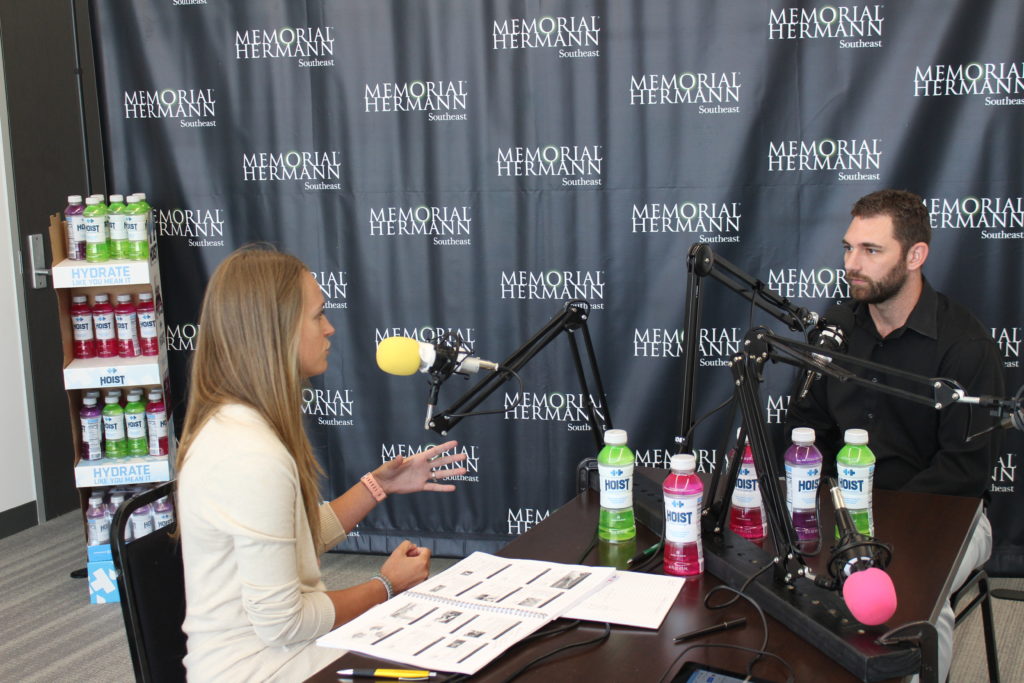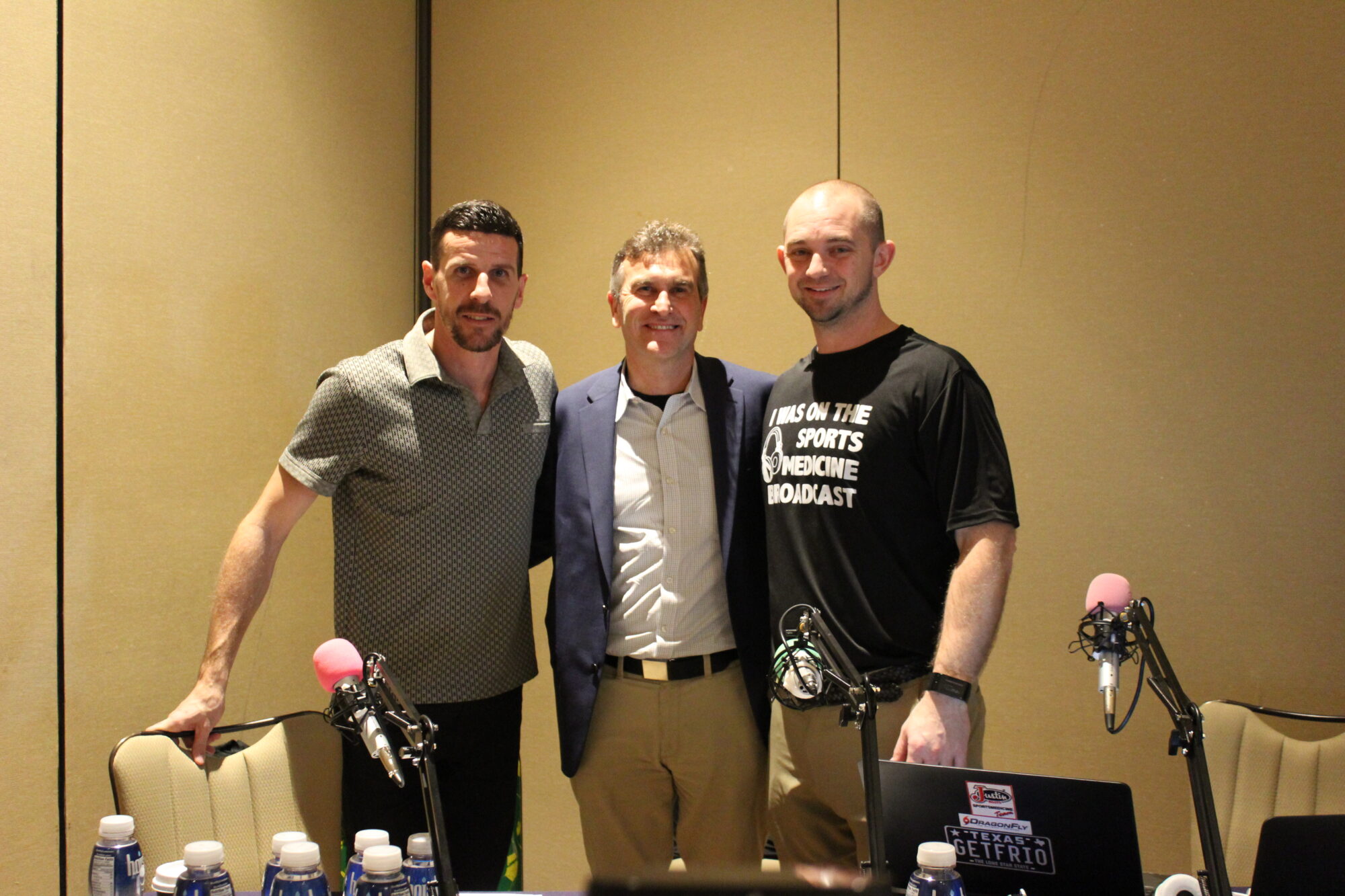Podcast: Play in new window | Download
Thrower’s elbow is an injury that AT’s and coaches deal with frequently. What do we need to know as we interact with young throwers?

The more you throw and the higher velocity you throw at increases your risk for injuries. As AT’s and coaches, we need to not only be aware of the rules that are in place to protect these young athletes we need to follow them and encourage parents who may have their kids participating in multiple leagues to stay within the guidelines. The bottom line is the AMOUNT MATTERS.
What should we do when a throwing athlete begins to complain about pain?
When complaints begin we need to take them out. Shut them down from throwing and begin evaluating what might be going on. Remember that in developing youth, growth plates are the weakest link. Rest when the pain starts to prevent an injury in the growth plate.
We hear about the dreaded curveball and why it shouldn’t be thrown by young athletes. Is this accurate?
We need to change how we think about the curveball. Any speed off-speed pitch will decrease the forces on the elbow and shoulder. The more you throw at an increased speed the higher your risk moves. It’s not the curveball that is the problem, it is the fact that most young people don’t have the correct mechanics to throw it.
What about asymmetry? We are told to expect it in throwing athletes. At what point should we be concerned?
When you see a greater than 15-20 degree difference between the throwing and non-throwing hand there is a significant increase risk of injury.
If the athlete has this significant difference but isn’t experiencing pain or throwing mechanics haven’t changed, you don’t have to shut them down but you should be working to get them around 10 degrees of motion between their throwing and non-throwing arms. It’s also important to remember that throwing slows down progress on the range of motion games.
Should we change our thinking on surgical vs non-surgical treatment of shoulder injuries and thrower's elbow?
It really is a case by case basis. Young athletes with acute large tears probably should get a surgical consult. More chronic injuries in a little bit older throwers might choose rest to get them pain-free or to finish out their career. It’s not cut and dry one way or the other but needs to be evaluated case by case.
What are the biggest barriers to recovery post-injury?
The number one barrier is compliance with treatment. Staying on top of them and encouraging them to continue with the rehabilitation even once they’ve become pain-free. Compliance with prevention is also difficult. They need constant reminders and encouragement to follow through.
Are there any prehab thoughts from athletes awaiting UCL repairs?
Braces that prevent valgus and restrict 10-100 degrees are recommended. Controlling pain and inflammation pre-surgery and reducing the stiffness in the joint is helpful. The athlete can continue to exercise if they are pain-free and using symptoms as their guide.
Is there anything else AT’s should know regarding throwing injuries?
Young kids are at increased risk because of their growth plates and mechanics. Be their advocate, and follow the rules.
Related episodes
Here are other podcasts related to elbow injuries
Contact Us:
Jeremy Jackson
Shawn Ready – shawnreadyatc@gmail.com
Dr. Mark Knoblauch – maknobla@Central.UH.EDU
Dr. Layci Harrison – lharris5@Central.UH.EDU
Bob Marley – Bob.Marley@uth.tmc.edu
ATCornerPodcast – ATCornerds@gmail.com
Joseph Eberhardt – eberhardtj@pearlandisd.org
Christina Fry – fryc@pearlandisd.org
These people LOVE Athletic Trainers and help support the podcast:
Frio Hydration – Superior Hydration products.
Donate and get some swag (like Patreon but for the school)
HOIST – No matter your reason for dehydration DRINK HOIST
MedBridge Education – Use “TheSMB” to save some, be entered in a drawing for a second year free, and support the podcast.
Marc Pro – Use “THESMB” to recover better.
These people LOVE Athletic Trainers and help support the podcast:
Frio Hydration – Superior Hydration products.
Donate and get some swag (like Patreon but for the school)
HOIST – No matter your reason for dehydration DRINK HOIST
MedBridge Education – Use “TheSMB” to save some, be entered in a drawing for a second year free, and support the podcast.
Marc Pro – Use “THESMB” to recover better.
Frio Hydration – Superior Hydration products.
Donate and get some swag (like Patreon but for the school)
HOIST – No matter your reason for dehydration DRINK HOIST
MedBridge Education – Use “TheSMB” to save some, be entered in a drawing for a second year free, and support the podcast.
Marc Pro – Use “THESMB” to recover better.
